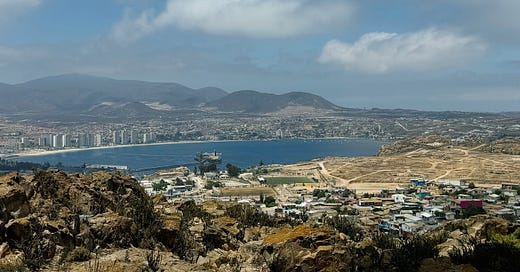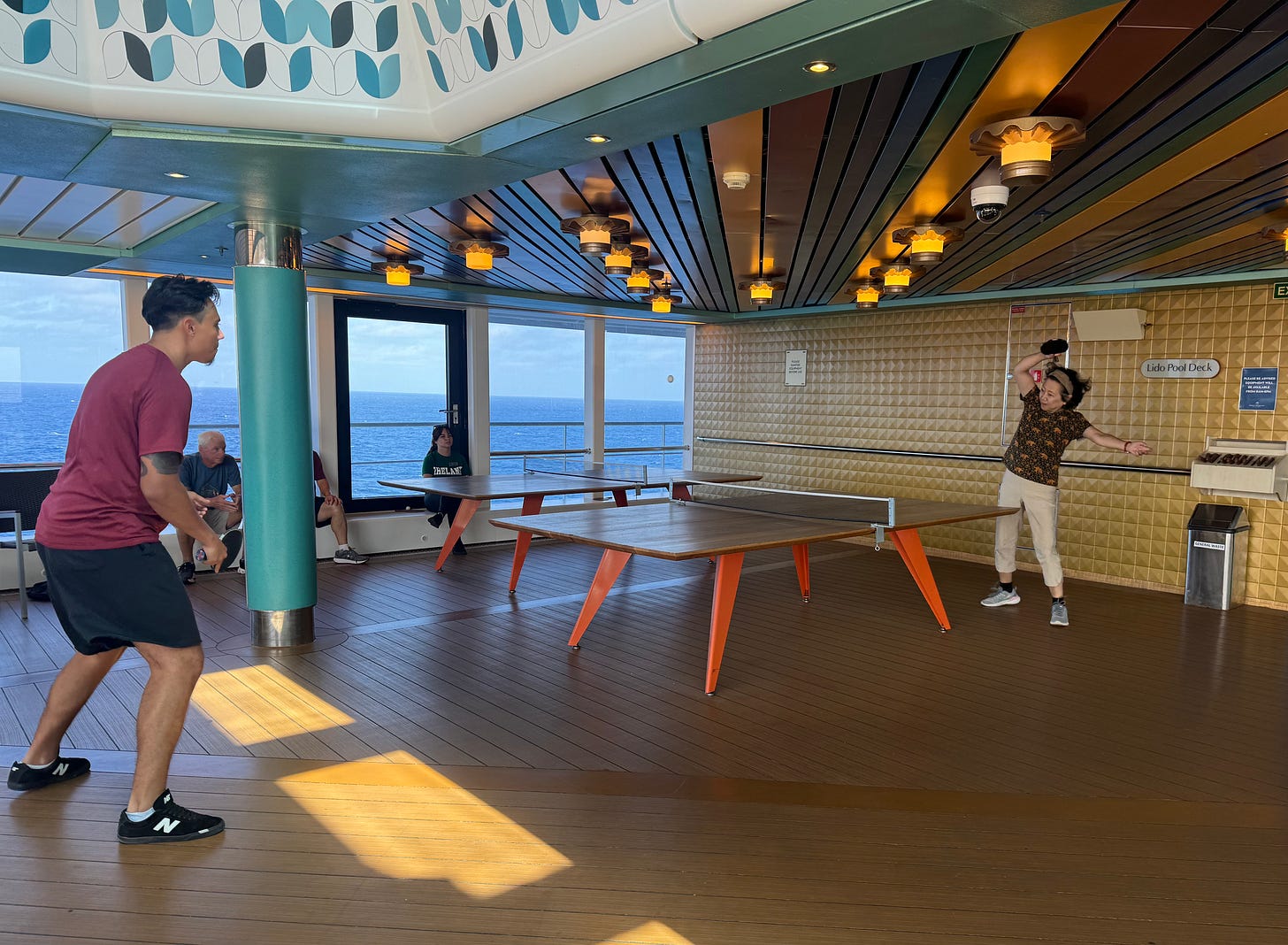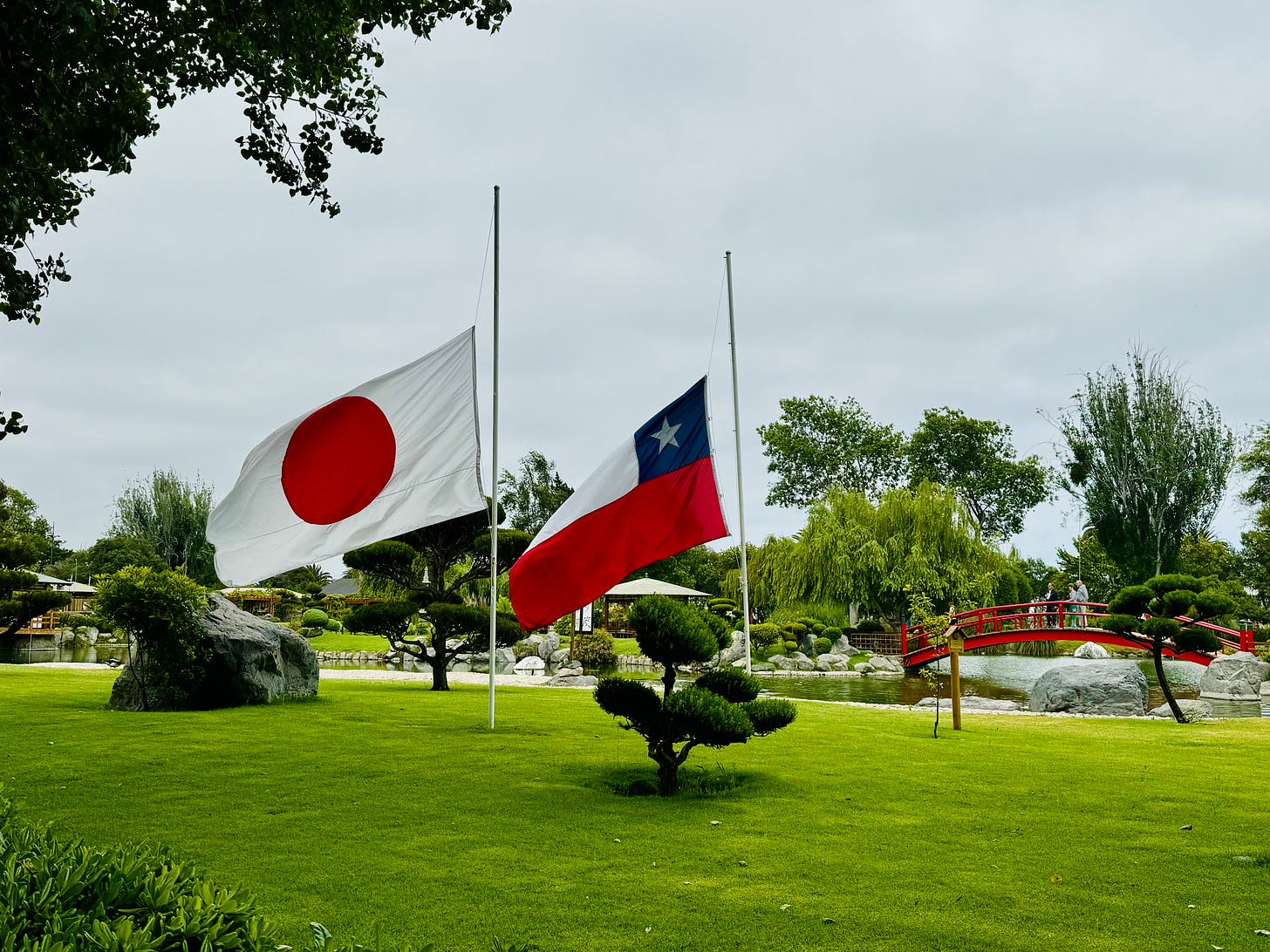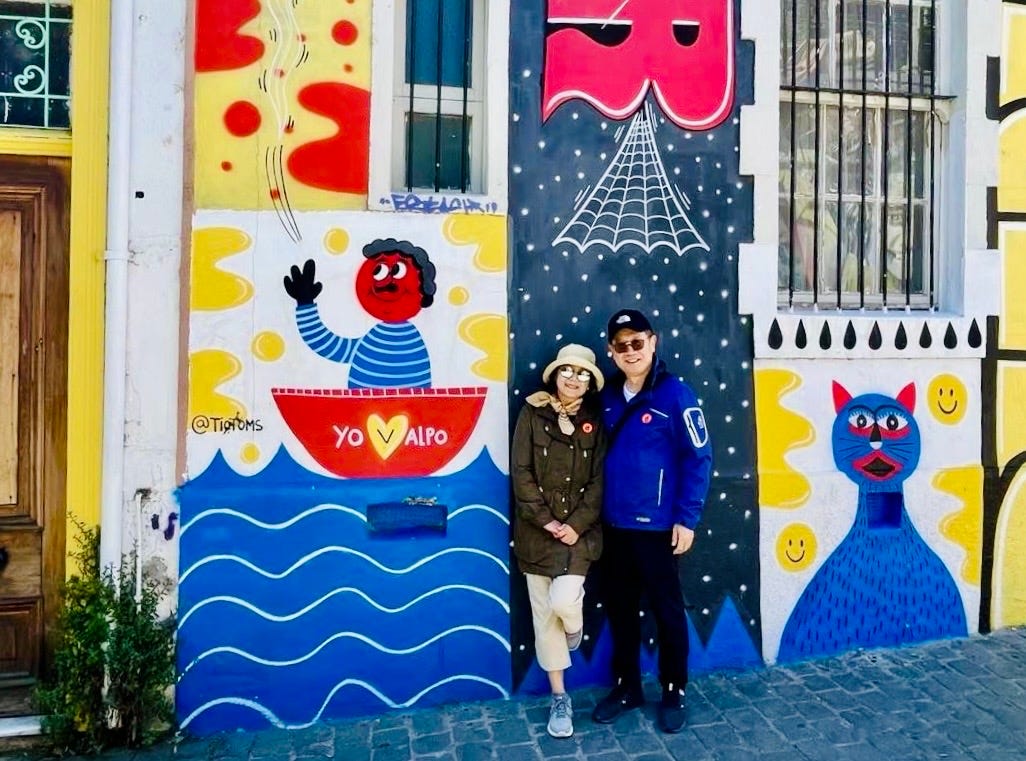Sailing South, Discovering Chile's Coastal Charms
South America Cruise Diary (November 28-December 2, 2024)
We were at sea for two days, sailing across the vast Pacific Ocean, steadily making our way toward Chile—a long and narrow country that stretches along South America’s western edge, boasting over 6,000 kilometers of Pacific coastline.
At Sea – November 28, 2024
I didn’t know our exact location, but the clock had moved forward by one hour today. So, when we got up, it was already 8:30 a.m. As the number of sailing days increased, my appetite seemed to wane. For breakfast, I skipped the usual eggs and meat, opting instead for a yogurt bowl topped with a colorful assortment of berries, chia seeds, oatmeal, and walnuts. Of course, no morning is complete without a big mug of coffee.
At 10:00 a.m., I attended a port talk on Coquimbo (La Serena). The World Stage Theater was packed—if you didn’t arrive at least 30 minutes early, you’d likely be left standing. Holland America Line has a policy of offering only one live port talk per destination, with no replays available on the in-room TV. This made it all the more important to attend in person. These talks are essential for learning about upcoming ports of call—what to see, how to get around, and helpful tips for exploring on our own.
Even though we were at sea, I was as busy as a bee. I sat in on a presentation titled The Natural Highlights of Northern Chile by Dr. Michael Douglas. He also reflected on our previous destination, Peru, noting, “In Peru, the poor live on the hillsides with few facilities, while the wealthy live on the flatlands—the opposite of North America.” He added, “Lima doesn’t get rain, but fog and mist still manage to support vegetation.”
Right after that, we had another port talk—this time on San Antonio, one of our next destinations in Chile. I listened intently to information about places like Isla Negra, Paseo Bellamar, Humedales, and Valparaíso–Viña del Mar. Everything sounded so exciting, but we’d have to narrow it down to fit both our interests and time frame.
Today was American Thanksgiving. To celebrate, I wore my red dress for the first time since we boarded the ship and headed to the Vista Dining Room for a festive dinner. I enjoyed pumpkin soup, turkey with mashed potatoes, and, of course, pumpkin pie. As I soaked in the warm Thanksgiving atmosphere, I felt deeply grateful for my family, friends, and the beautiful life I’m blessed to live.
At Sea – November 29, 2024
The clock moved forward another hour today as our voyage continued toward Chile. I decided to take the day at a more relaxed pace—reading in the library, listening to music on the sundeck, and watching the waves dance in front of me. In between, I joined a line dancing class and even participated in a table tennis tournament.
Later, the crew put on an impressive towel animal show on Deck 9, which I found both creative and amusing. On some evenings, we returned to our cabin to find a towel elephant or monkey sitting on the bed—a playful and caring gesture that never failed to make us smile.
Coquimbo (La Serena), Chile – November 30, 2024
After two days at sea, the Oosterdam arrived at the Port of Coquimbo (City of La Serena), Chile, at 8:00 a.m. this morning. We were reminded that Chilean authorities are very strict about passengers bringing food ashore from the ship. To comply with regulations, we were asked to complete an affidavit confirming we would follow the rules. We were also instructed to carry the completed affidavit, a transit card, our ship card, and passport at all times while traveling in Chile.
Like other ports in South America, this was not a cruise terminal but a cargo harbor, so passengers were not allowed to walk within the port area. Fortunately, a shuttle bus service had been arranged to transport us from the ship to the port gate.
We shared an Uber with a couple from New York City to downtown Coquimbo, and were dropped off at the Plaza de Armas, the city’s main square. The 20-minute scenic ride cost only $5—such a great deal! Being a quiet Saturday morning, the town was still sleepy. In fact, it felt as though our presence intruded on the locals’ peaceful weekend. Nothing was open except the church and gardens. A nice, serene way to start the day.
Our next destination was the nearby city of La Serena, known for its iconic landmark: El Faro, a lighthouse located along the coastal avenue. Built in the early 1950s, it has become one of the most popular tourist attractions in the area. By the time we arrived around 10:00 a.m., the area was already bustling with both locals and visitors.

While browsing Google Maps, we discovered a Japanese Garden nearby—and what a beautiful surprise it turned out to be. As we strolled along its peaceful trails, it truly felt like we had been transported to Japan. Every detail reflected traditional Japanese aesthetics. The Japanese Garden of La Serena was a gift from Compañía Minera del Pacífico to promote cultural and tourist development in the Coquimbo region. Designed by Japanese architects and constructed between 1988 and 1995, it is the largest Japanese garden in South America.
After soaking in the elegant atmosphere of the garden, we headed to the magnificent Third Millennium Cross (Cruz del Tercer Milenio). This 83-meter-tall, 40-meter-wide concrete cross stands atop El Vigía Hill in Coquimbo. Construction began in 1999 and was completed in 2001. It is considered the tallest monument in South America, perched 197 meters above sea level and offering panoramic views of the region.
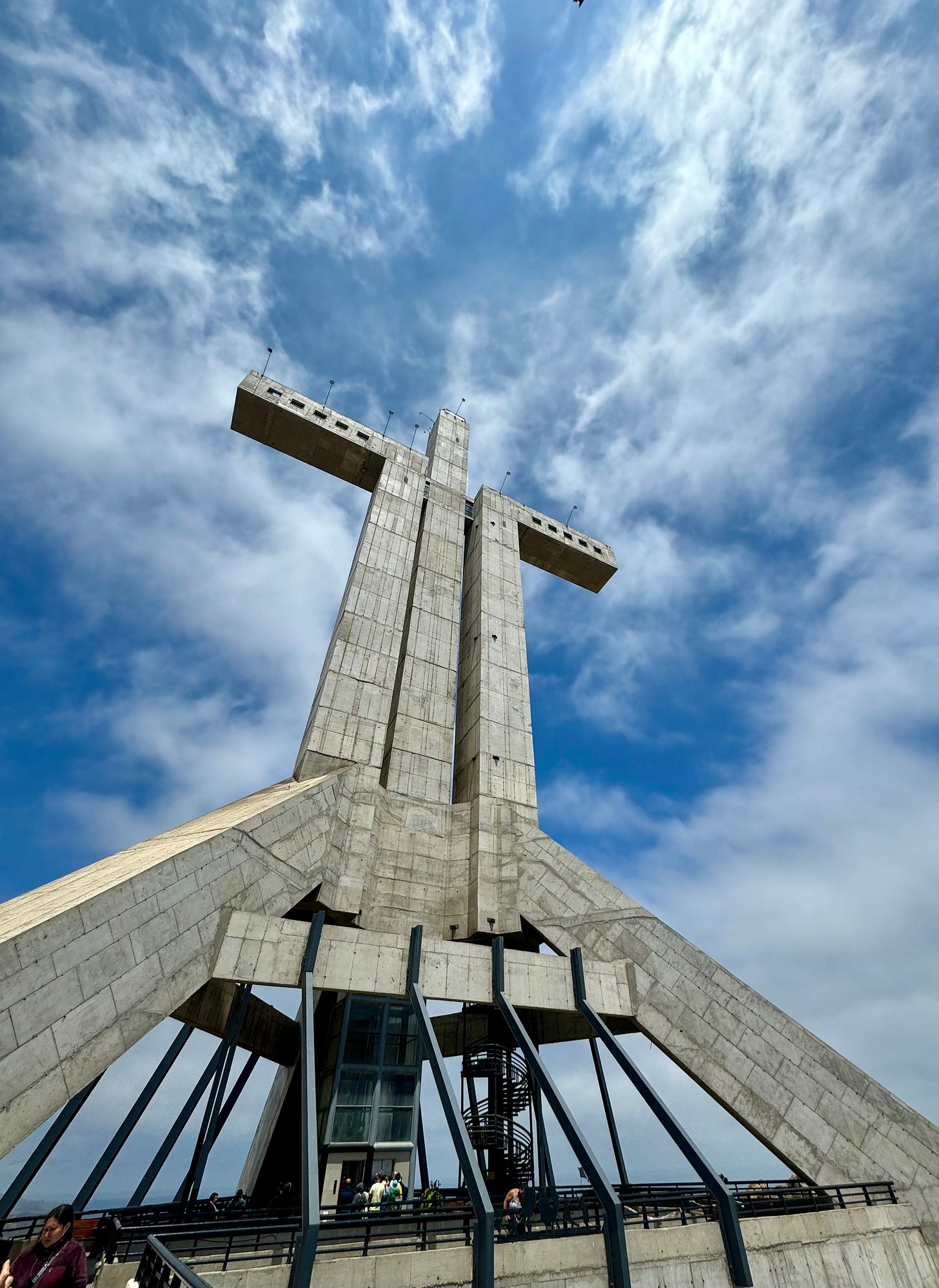
Two elevators are available to take visitors to the top, but unfortunately, one appeared to be malfunctioning—it was operating without a door and emitted a loud, unsettling squeak during its ascent. Fearing the possibility of getting stuck and missing the ship, we reluctantly decided not to go up.
It was a hectic yet fulfilling day—full of discovery, history, and beautiful moments.
San Antonio – December 1, 2024
The Oosterdam docked at the port of San Antonio just before 7:00 a.m., with departure scheduled for 3:30 p.m. We had considered visiting Santiago, Chile’s capital city, but since it’s more than two hours away by car—one way—we decided it wouldn’t allow enough time for a meaningful visit.
Instead, we opted to explore Concepción Hill, a popular tourist district in the city of Valparaíso, about an hour’s drive from the port. Valparaíso, a UNESCO World Heritage Site, is renowned for its architectural heritage and rich, eclectic history. Wandering through its narrow streets felt like stepping into a living canvas. For centuries, artists have drawn inspiration from the city’s colorful houses, distinctive architecture, and the unusual buildings perched atop its 42 hills surrounding the bay.
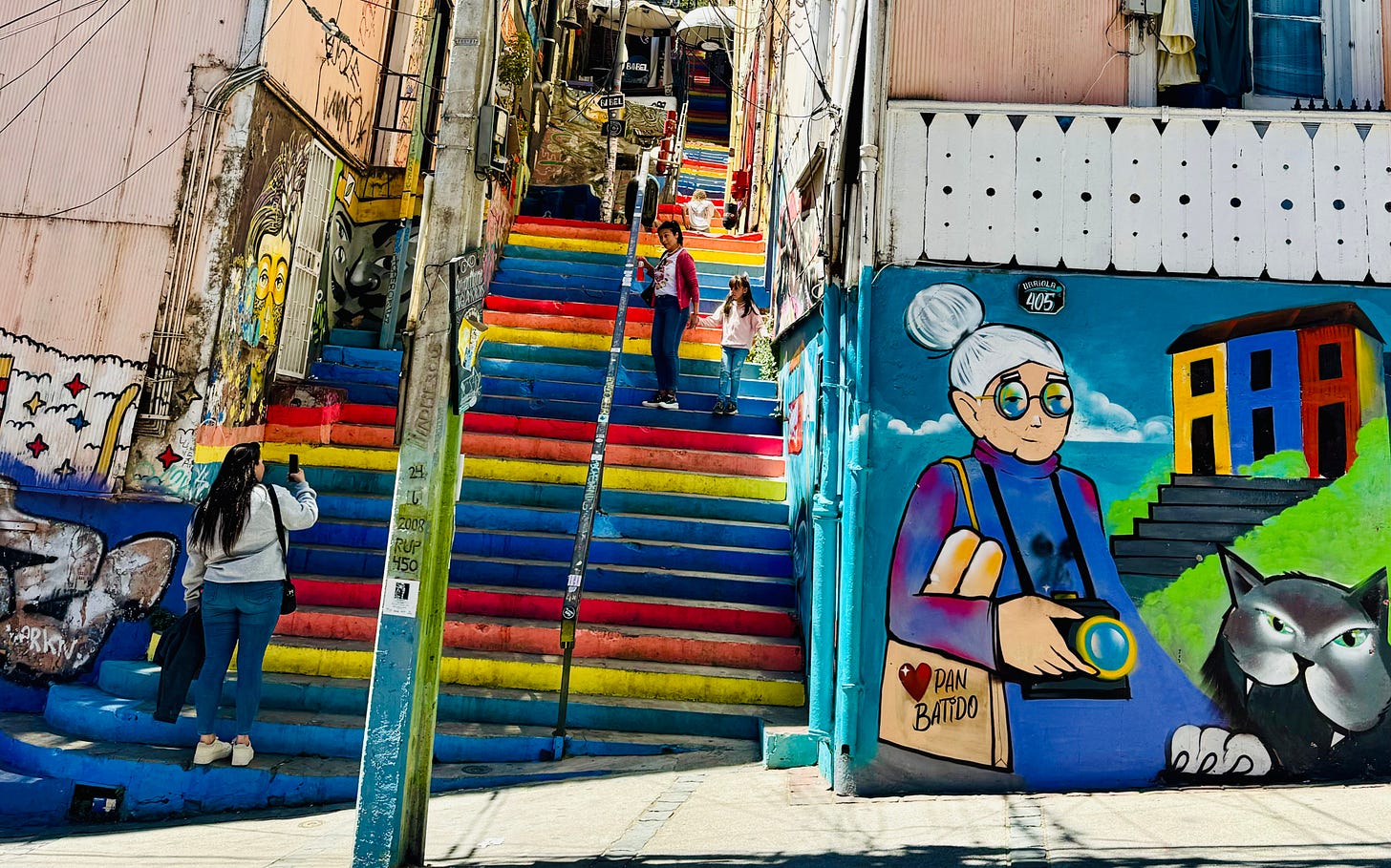
Valparaíso is home to hundreds of poets, painters, musicians, and sculptors, making it a vibrant cultural hub. The entire area feels like an open-air gallery, with murals, graffiti art, and bursts of creativity everywhere. As we walked uphill and downhill through winding alleys, I was mesmerized by the vivid wall art and charming character homes painted in bold, joyful hues. The weather was spectacular—sunlight bathed everything in golden warmth, making the city sparkle.
Back at the port, about half of the passengers disembarked in San Antonio while new guests came aboard. We said our goodbyes to friends we’d met along the way, wishing each other safe travels and hoping our paths might cross again somewhere, sometime.
As for my husband and me, our adventure continued— further southward along the coast of South America.
At Sea – December 2, 2024
Chile’s distinctive shape—a long, narrow ribbon of land hugging the Pacific—boasts over 6,000 kilometers of coastline. After three days of sailing and two port stops, today was another peaceful sea day. Our next destination: Puerto Montt, still within Chile.
Stay tuned!
